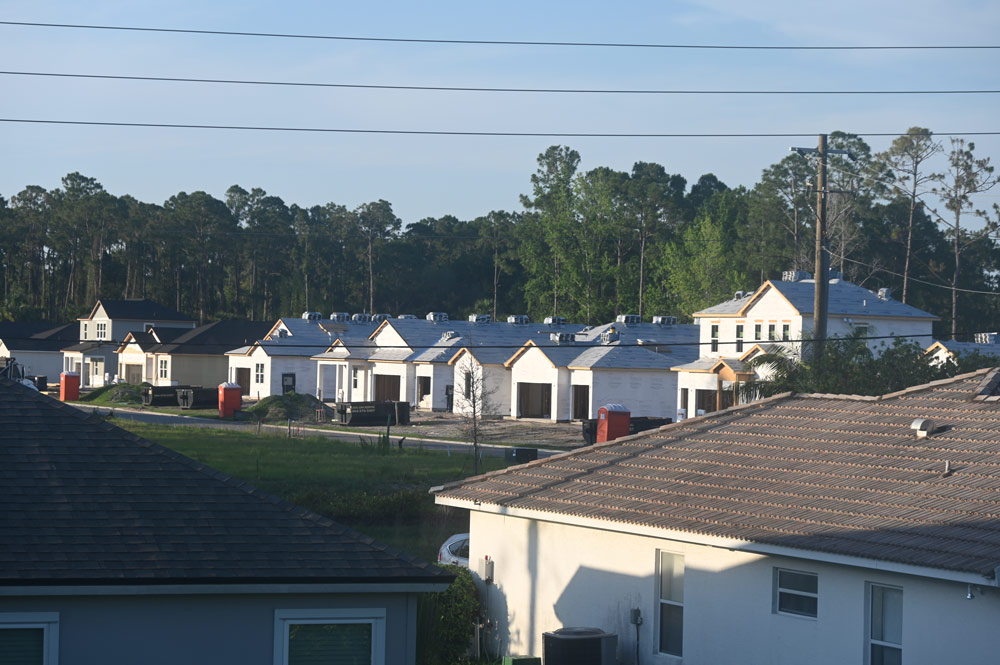
Last Updated: 9:15 p.m.
The Palm Coast City Council is about to raise development impact fees for transportation, fire and parks from 95 percent to over 160 percent in some cases. The new fees would go in effect in full in mid-September.
Impact fees are the one-time fee builders or developers pay on new construction to defray the cost of the “impact” of their development on infrastructure. The revenue helps pay for new roads, new parks or recreation centers and new fire stations or fire trucks.
The added cost to builders is typically passed on to the buyers of the new houses or new commercial buildings or is built into renters’ fees. Most consumers don’t pay attention to impact fees, or do so only to the extent that they want builders and developers to pay them, as if consumers will be immune to the new cost–especially today, when developers have a bad rap in Palm Coast.
Existing residents are largely but not entirely immune, as many move internally and buy new houses with built-in fees. But the cost falls disproportionately on new people moving into new houses. The city experienced a boom in new residents between 2018 and today, and is hoping the boom will continue. The hope is not without a speculative edge.
Cumulatively, impact fees can add tens of thousands of dollars to the cost of a house, though since the recovery of the housing market, the increase in the median price of houses has far outstripped the added costs of impact fees. Housing price increases have slowed, as has the housing market, which does not bode well for the city’s hope to continue capitalizing its future on outsized growth.
Based on the unanimous consensus among the four Palm Coast City Council members who discussed the new fees for some five hours at a workshop Tuesday, the new schedules will be adopted on first reading at next week’s council meeting. (Mayor Mike Norris, the fifth member of the council, was on vacation.)
“I commend staff and my colleagues for working hard and being diligent and open-minded so that we could come to a consensus on some very tough and important issues that will have lasting effects on the future of our city,” Council member Theresa Pontieri, who chaired Tuesday’s workshop, said.
The transportation impact fee will increase for the first time since 2018, not including annual inflation increases. The fee for a single-family house will increase from $3,502 to $6,520, an 86 percent increase. (A previous version incorrectly reported the increase to $8,295, the consultant’s original recommendation, later amended by the council after certain projects, like the widening of U.S. 1, were excluded from calculations, since U.S. 1 is a state responsibility. See the full, revised proposal here.) For apartment units, the increase would be from $2,018 to $4,155, a 105 percent increase. Commercial buildings, private schools, industrial buildings and other structures will see similarly sharp increases.
The fire and rescue impact fee to support the city’s fire department will increase for the first time since 2020. The fee is levied on a per-1,000-square-ft. basis. It is currently $434.51 per 1,000 square feet of residential housing (up from $367 when it was adopted in 2020). It would go up to $859, or 98 percent. For non-residential space, the existing fee of $700 will increase to $1,364 per 1,000 square feet, a 95 percent increase.
The parks and recreation impact fee drew the most debate and disagreements among council members. The fee was also last raised in 2000, not including inflation increases. The existing fee is $1,800. The study had recommended an increase to $3,620. The council lowered that to $3,166, a 73 percent increase. (Every impact fee increase must be based on a rigorous analysis that should withstand legal challenge. Local governments hire impact fee consultants to carry out that task.)
The parks impact fee would have been higher but for the council’s decision to lower it by removing three major projects the city had hoped to build in coming years, with impact fee revenue: a community center at the Palm Harbor Golf Club, a new recreation center, and an arts center in Town Center, next to the projected YMCA.
As proposed, the fee will provide for the $3 million contribution the YMCA is asking of the city to help build the new facility in Town Center. It would also provide for a nearly $20 million sports complex similar to the Indian Trails Sports Complex.
Impact fees will not be increased annually for inflation anymore, as had been the case until now. The finding of extraordinary circumstances requires a supermajority of at least four council members. It appears to have that, even if Mayor Mike Norris were to vote against.
Starting in 2021 Florida law restricted impact fee increases to no more than 50 percent in a four-year period, with any increase above 25 percent having to be applied in annual increments over four years. The law allows exceptions to the 50 percent rule. To raise the rates past that limit, a local government must prove that it is facing “extraordinary circumstances.” Those criteria are set out in law. The locality’s population has to have been increasing and to be projected to increase faster than the state’s rate. Inflation has to have significantly increased the cost of construction.
Palm Coast argues it is meeting those criteria. The Flagler Home Builders Association disagrees, but has not signaled whether it will challenge the increases in court.
The idea behind impact fees is that is that a new house’s residents will “impact” roads by adding to traffic, they will impact schools by requiring additional space for students, parks by requiring more play room, the fire services by requiring more responses in emergencies, and so on.
All local governments levy impact fees for a range of services, including schools, libraries, police, fire, water, sewer, transportation, sometimes arts and culture. Revenue is dependent on growth. In a no-growth period, as in the years following the housing bust, impact fee revenue is almost non-existent. Revenue may be spent only on the sort of infrastructure that adds to the existing inventory. That revenue may not be used either for operating expenses or to repair existing infrastructure.
For example, transportation impact fee revenue may be spent on adding a turning lane, or adding a travel lane, or building a new road or bridge. It may not be used to repave an existing road. School impact fee revenue may be used to build a new school or add to one, as was the case recently with Matanzas High School’s new wing. It may not be used to replace a roof or pay teachers (even new teachers). Palm Coast used park impact fee revenue to build the new Southern Recreation Center. It could not that revenue to replace tennis courts at Holland Park or replace the pool at its aquatic center.
Anthony Amaral, a Palm Coast resident, a developer and a candidate for the council, wanted to know if the city owns the land for the neighborhood parks, the skate park and the sports complex it is planning, whether the planned sports complex will be competing with another sports complex in the same area that the county is considering building in a private-public partnership, and what the annual operating cost of running the new facilities will be. “I just fear that we’re going to have a bunch of dead grass and nothing there to justify at the end,” Amaral said.
The Home Builders Association disagrees with the determination of extraordinary circumstances as well as the elongated timeline the city is projecting for needed projects–2050 instead of a shorter timeline. The 2050 milestone is the city’s assumed point at which Palm Coast will be built out, based on the city impact-dee consultant’s current (if tendentious) projections.
Those projections are based on mid-level estimates by the Bureau of Economic and Business Research at the University of Florida. They have seldom been accurate. But local governments and law enforcement agencies eagerly rely on them when they look to muscle up their budgets, since the projections, as projections, are irrefutable as they are unprovable, and BEBR–however astrological its record–carries its own prestige.
“We’ve been planning for build-out for as long as I can remember,” Long said, noting that the city should have been at build-out “probably 25 years ago.” She was right: in 1974, ITT was projecting that by 2000, Palm Coast would be a city of 600,000. “But the market always changes. Something always happens. And I am not a betting woman, but I don’t think we’ll be at build out at 2035 because something’s going to change. Something’s going to happen, just like it has every other time before. So choose wisely on what you’re going to put in.” Whatever the city promises but doesn’t deliver is money the city will have to return.
“So keep all that in mind,” Long said, “and consider the housing affordability and that you would put yourself in a chokehold. If you don’t have the businesses and the people, then you’re not going to have the impact fees, and all this is for naught.”
![]()
See the city’s impact fee studies and analyses here.














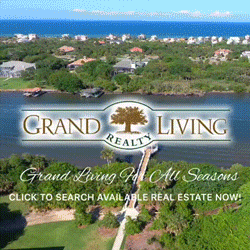

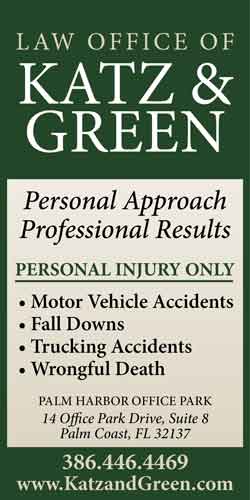

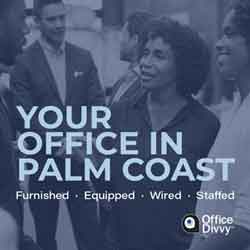
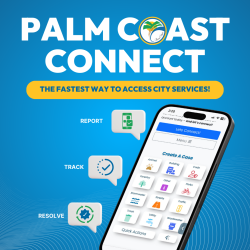

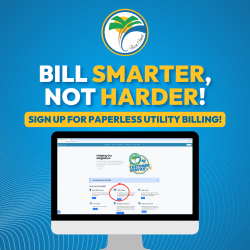

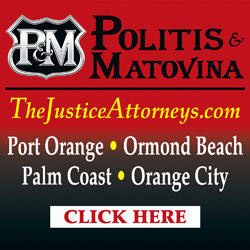
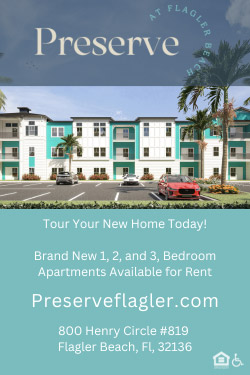



JimboXYZ says
The residential growth wasn’t a problem until 2021 when all the gouging started. We all know the names of the one’s that sold “affordable housing” post pandemic. Relatively, if housing was unaffordable from 2018-2021, why would anyone think that doubling the price of everything housing, raising the interest rates, that would somehow make housing more affordable because of a $ 15/hour minimum wage increase that was incremental & still hasn’t become that targeted $ 15/hour as a minimum wage. Where did the money go for repaving roads & everything else infrastructure ? And it’s not passing the cost on to future residents, existing residents are paying for all this expansion for utility increases. Every grant project was grossly underfunded, if not outright unfunded. Grossly underfunded became slashed grants that further put the burden squarely on existing residents.
Land of no turn signals says says
About time.
PB says
Glad I was sitting down! I am sure my taxes will go down soon, right!
Villein says
Yes, this is genius… subterfuge. Raise the impact fees as the economy is cratering so they will never get paid. Then, the developers will cry about high impact fees. The council will oblige and cut fees and then more growth without revenue. I guess old tricks are the best tricks. Or maybe a foolish city council and its spurious impact fees soon part ways.
Callmeishmael says
Thank you, councilmembers. Please see this through and ignore the lame arguments from Ms. Long, re: no growth, no impact fees.
Everything runs in cycles. We’ll be fine and adequate impact fee revenue now has a better chance of being there when we need it.
Hey, Nick Klufus, are you paying attention?
Trebor Mahguoh says
Is this only on new developments or will the 8000+ houses that already have been slated for development have to pay it. Lets call it the Alfin tax….
FlaPharmTech says
Sounds good. But I will believe when I see it. I’m not overwhelmed by PC’s leadership.
FLF says
Copy and pasted from the second paragraph in this article.
“Impact fees are the one-time fee builders or developers pay on new construction to defray the cost of the “impact” of their development on infrastructure. The revenue helps pay for new roads, new parks or recreation centers and new fire stations or fire trucks.”
Who in the hell is paying for water treatment and stormwater? I don’t see it in this article. I’m looking at a 36% increase on my water bill. What will the next drought or hurricane bring? Comments from the city like “shame on you for watering your yard during this monumental drought this May!” (Don’t you know we have to make room for the others that will suck more water out of the ground?) When we get 10″ of rain and my 1960’s design pep tank alarm begins to sound, threating to back up raw sewage into my house because the poop pump can’t keep up. I’ve lived here for 25 years. So I’m stuck with swales and my pep tank; you know I’m getting of the infrastructure upgrades. THE BILL!
FlaglerLive says
Water ad sewer impact fees were increased 30 percent in 2024, and rates were increased 31 percent this year.
Jack says
It should have happened years ago, but I’m glad they are considering raising the Impact fees on Developers.
I hope they will not lower the amount before it’s approved.
Atwp says
Increase increase increase, salaries stay about the same for the little working people. Who can afford to live in Pal Coast any more? Almost every 6 months I read about increases in this city. When the money come into the city because of increases is it used properly? Does every citizen in the city get the so called benefits from the increases? The answer is a big no. Where money floats sticky fingers are always in the money pot. People are stealing some of the money. The residents always get the short end of the increases. The city council members and the construction companies get appear to me to get best part of bye deal, just saying. Will the money be used properly? If the pass is any indication, the answer is no.
BIG Neighbor says
I went to the first brief at the Community Center, was the only amateur citizen there. The City staff and SMEs were polished and deliberate in arguing for their model projections. But when I walked away, I thought about how they minimized the spiraling costs on to “housing that’s affordable,” thinking these same model modes are used to justify increases in other market consumables….yikes!! With the cresting wave-lag of economic reality crashing down on new home buyers, it scares the bejesus out of me as these costs will inundate most of us barely treading water, sinking us in just a few years….hope I’m wrong.
Pig Farmer says
“Impact fees will not be increased annually for inflation anymore, as had been the case until now. ”
WTF??? So you finally increase the impact fees to an appropriate level, then allow them to immediately shrink (in buying power) due to inflation? Why???
The dude says
This should’ve been done 3-4 years ago.
Our bills won’t go down due to this, but hopefully they won’t go up as fast and as high as they would’ve otherwise.
T says
This is why they wanted to grow pocket more money to their pockets palm coast was nice till they destroyed it.
Laurel says
Being a native Floridian, and a resident of Florida for 73 years, I can tell you that the price of growth never, ever goes down. Nope, never. You can put all the Margaritavilles, and sports arenas around, and your cost of living here will continue to rise. Your congestion will get thicker. Your homes will cost more. A population of strangers. The only people who really benefit, are the developers and investors.
I’m sorry folks, but this place does not compare to south Florida. You don’t have the calm, crystal clear water. You don’t have the reefs. You don’t have the fishing. You don’t have the culture. You don’t have the public transportation. You don’t have a single inlet in the county. You don’t have a freakin’ downtown! What you DID have was the greenery. You DID have the nature right in your back yard. You DID have friendly people who smiled and said “hello.” You DID have the space. You DID have the lack of congestion. That’s why we moved up here. When this place is built out, which some are looking forward to, the desirable parts of this area will be gone for good. Just another cookie cutter metropolis. Uniqueness gone. Coquina beach gone. Wildlife gone. Peace gone. Community gone.
When the real estate people and developers got voted in (and apparently are still running) the ever lovin’ tourist promotion began hard. The unbridled growth began hard. So, now, you have higher utility rates with crumbling utilities, crumbling roads, higher taxes, higher fees, higher insurance, congested roads, more crime, people trying to get the parking space before you, and on, and on, and on. Think of all the posters here who have sold and said “bye-bye.” Look at over built Cape Coral. You finally get someone on council who says “Whoa!” and he gets roasted. Imagine that!
Well, enjoy. You’ve been sold that growth is a good thing. People moved here and complained there were no jobs! I always wondered “Who does that?” Funny, people managed to live here before all the wonderful growth hit the area. And so it goes.
Just a thought says
Widening of US1???? How is that freaking possible? Probably the the only road in Flagler County that has minimal traffic. How about SR100? Worst traffic in the 36 years I’ve live here.
Billy says
Way too late now! The town is destroyed by developers!
CPFL says
They need these added fees and need to add a 5-10 year added temporary tax like 500 a year. This could be used to offset costs for new homes being added to water and other infrastructure needed.
172 says
Thank you for blogging a more complete account of the discussion and (tentative) agreements than we saw in certain local news media. This seems reasonable. It was concerning to read elsewhere of the council member who said something to the effect of, “we have to be careful because these costs get passed along to homeowners.” Well, HELLO, all public expenses get passed along to homeowners. If we didn’t raise impact fees for new development, we’d still need to accommodate that development, which would cost money, which would increase property taxes for all. Frankly, it’s not a bad idea to pass along these costs mainly to new arrivals via impact fees on the developers. Surely the developer knows their new dwellings need municipal infrastructure. Is appx. $10k on a six-figure dwelling such a high price to pay? Better that then raising everyone’s property taxes by $2k. It will be interesting to see if developers stage another truck show or just work behind the scenes. Either way, we’ll know by whether the council goes wobbly on this.
T says
When did they start fixing the roads here so many needs prepared where that money go